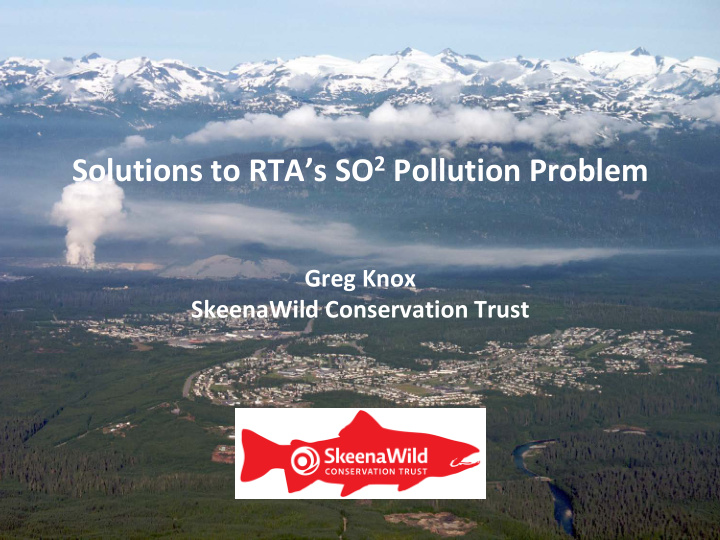



Solutions to RTA’s SO 2 Pollution Problem Greg Knox SkeenaWild Conservation Trust
What are the options for reducing SO 2 ?
Where is SO2 emitted at the smelter? 7% 75% 18%
Strategies to Reduce SO2 Emissions • Use low sulphur petroleum coke • Use pre-calcined coke • Use prebaked anodes • Reduce aluminum production • Install SO2 scrubbing technology • A combination of the above
Viable Options • Wet scrubbing using sodium (soda ash) • Wet scrubbing using seawater • Wet scrubbing using limestone • Wet scrubbing using lime • Dry scrubbing using lime (circulating dry scrubber)
Environmental Impacts of Seawater Scrubbing • Uses large volumes of seawater (8000 m 3 / hour) • SO 2 reacts with with seawater and turns into sulfate • Sulfate naturally occurs in high concentrations in seawater (increase in sulfate approx 5%) • Returned seawater controlled to a pH of 6 – pH of 6.5 • Temperature increase typically 1 – 2 0 C No significant impacts to the ocean
Environmental Impacts of Dry Scrubbing • Lime reacts with SO 2 to form gypsum (drywall) • Gypsum has no harmful environmental impacts, but requires disposal in a landfill No significant Impacts to to th the land
Scrubbing Costs • $100 million to install scrubber to keep SO2 at pre KMP levels • $200 million to install scrubbers to reduce SO2 by over 90% • Plus annual operating costs
Industrial Use of SO2 Scrubbers • Used in 20 aluminum smelters around the world (i.e. Norway, Quatar) • Studies of these facilities, no significant harm to the environment • Used in other types of smelters and coal fired power plants (extensively in china)
Benefits of Scrubbing Community • Impacts of SO2 pollution not born by citizens • Little or no acid rain • More jobs installing & operating scrubbers RTA • Recognized as world leader in protecting peoples health & the environment • Offset costs of scrubbing with being able to use lower cost petroleum coke • Build a healthier relationship with local citizens, leaders, and its own union
Recommend
More recommend